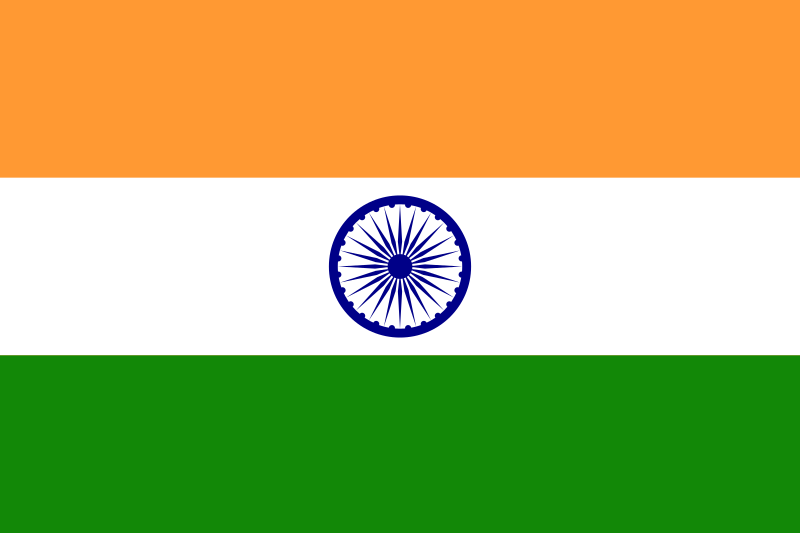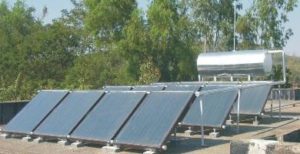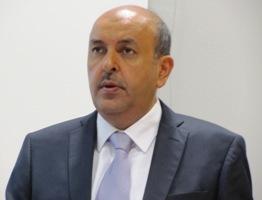India: “Test centres will educate manufacturers on quality measures”
June 26, 2013
From railway management to solar thermal technology: this is the how the life of Veena Sinha took a new path in December 2012. Sinha had worked with Indian Railways at the middle management level for 15 years. She had handled matters ranging from technology and human resources issues to project implementations in the field of electric traction and rolling stock before she started as Director – Solar Thermal at the Indian Ministry of New and Renewable Energy (MNRE) in December 2012. Solarthermalworld.org spoke with her about the market’s development and the quality assurance measures of the MNRE.
Solarthermalworld.org: What is the major motivation of the MNRE behind scaling up the implementation of solar thermal technology in India?
Sinha: The rising cost of electricity and fuels combined with the demand-supply gap offer ideal conditions to use solar energy for heating and cooling applications. With India being an industrial and vastly populated country, the demand for hot water is huge, which means solar energy can play a crucial role in this nation abound with solar radiation.
Solarthermalworld.org: You started as the Director for Solar Thermal and Energy Access and at MNRE in December 2012. What are your responsibilities and your aims?
Sinha: My responsibilities include policy formation, project implementation, standards and quality monitoring mechanisms related to solar thermal for low- and high-temperature applications, as well as village electrification. My aim is to guarantee a successful market development in these fields and to make sure that the MNRE fulfils its administrative obligations. Considering the market’s dynamics, I would also like to put forth my best efforts to help the Solar Mission achieve 20 million m² of collector area by 2022.
Solarthermalworld.org: What are the major barriers to overcome in trying to fulfil the targets of the Solar India Mission?
Sinha: India is a vast country with a high penetration of solar thermal systems, mainly in selected regions. Intensive efforts will be required to spread the popularity of these systems to semi-urban areas and regions currently devoid of such systems. But since the National Solar Mission came into effect in 2010, manufacturers have done a fairly good job of expanding their business. Solar air drying systems also have a decent share in India and need to be popularised more, considering India is a major agricultural country.
Solarthermalworld.org: Will the MNRE encourage manufacturers to start exporting solar thermal systems?
Sinha: The Indian government distinctly supports and encourages the export of equipment and systems and has already had several schemes in place. There have been a few solar thermal manufacturers which export systems to the nearby countries.
Solarthermalworld.org: The solar thermal sector in India is getting more dependent on vacuum tube collector technology! Do you think this is a positive development?
Sinha: As of now, it is too early to say so. Indeed, the share of vacuum tubes in the residential sector in fiscal year 2012-2013 was close to 60 %. Flat plate and vacuum tube collectors, however, both have their own place on the market depending on the type of application. There are obviously much more vacuum tubes in the residential market segment, whereas the commercial segment of hotels and public buildings is presently dominated by flat plate collectors.
We have recently revised our benchmark process. Flat plate collectors in the domestic sector retain their price of 11,000 INR/m², while it has been reduced by 10% for commercial applications. Similarly, the revised benchmark for vacuum tube collectors has their price reduced by 15 % to 8,500 INR/m² in the domestic sector and reduced by 20% to 8,000 INR/m² in the commercial sector. In addition to the federal subsidies, tax rebates and electricity rebates will still be applicable.
Solarthermalworld.org: How will the MNRE control the quality of the imported vacuum tubes?
Sinha: In cooperation with the testing centre at the University of Pune in the state of Maharashtra and the Solar Energy Centre in Gurgaon, Haryana state, the MNRE is in the process of developing standards to ensure the quality of imported vacuum tubes. These two test centres will also educate the manufacturers on the quality measures that they should adhere to when purchasing vacuum tubes.
Solarthermalworld.org: Will the MNRE encourage businesses to start producing vacuum tubes in India and how will this support look like?
Sinha: Considering the high demand, local manufacturing would certainly be appreciated. It could avoid transport costs, likely reducing system costs compared to importing. We will welcome any manufacturer interested in setting up a production unit for vacuum tubes and they will have our full support.
Solarthermalworld.org: What role do European solar thermal manufactures and experts play on the solar thermal market in India?
Sinha: European solar thermal manufacturer are known for producing state-of-the-art technologies, particularly in the area of collector and storage tanks. They can also educate Indian manufacturers on the quality standards to be maintained and provide cost-effective solutions wherever hard water is used. Post-installation monitoring is fundamental and European manufacturers can play a role in showing how systems can be maintained during their life time.
Solarthermalworld.org: How would you summarise the achievements of the solar thermal market in India, particularly when it comes to solar water heaters?
Sinha: Prior to the National Solar Mission, the cumulative installed capacity of solar thermal systems had been about 3.51 million m². Until March 2013, this had surged to 7.01 million m², which by itself was a testimony of the mission’s success. Phase I had a target of 7 million m², which has already been achieved. Phase II of the Mission, which will end in March 2017, aims at an additional 8 million m² and looking at the market’s dynamics, we are working towards achieving the targets. India will definitely be a case study to serve as an example for other global markets.


